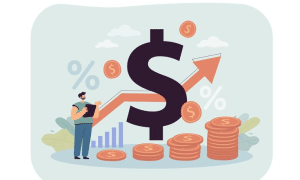Buying a home is a significant milestone, and securing the best mortgage is crucial for your financial well-being. Whether you’re a first-time buyer or looking to refinance, understanding the intricacies of home loans can save you thousands of dollars.
With a plethora of lenders and numerous loan options available, making an informed decision can seem daunting. However, breaking down the process into manageable steps can demystify it. By the end of this post, you’ll be better equipped to find the mortgage that suits your financial goals and offers the best terms.
Understanding your financial situation

Before diving into the world of home loans, it’s essential to assess your financial health. Start by reviewing your credit score, as it is a significant factor that lenders consider when determining your mortgage eligibility and interest rate. A higher credit score can open the door to more favorable loan terms.
Additionally, calculate your debt-to-income ratio (DTI), which can impact your borrowing potential. Lenders prefer a DTI ratio below 36%, indicating that you can manage your existing debts and a new mortgage payment. Accurate budgeting will help you understand how much you can realistically afford.
Don’t forget to gather all necessary financial documents, such as pay stubs, tax returns, and bank statements. Having these ready will streamline the mortgage application process and make it easier to provide lenders with the necessary information.
Improving your credit score
Your credit score significantly impacts your mortgage terms. If your score is lower than you’d like, take steps to improve it. Paying off credit card debt, making timely payments, and avoiding new debt can boost your score over time. Additionally, regularly check your credit report for errors, and dispute any inaccuracies.
An enhanced credit rating can qualify you for lower interest rates, saving you substantial money over the life of your mortgage. Don’t be discouraged if it takes time; even a slight improvement can make a notable difference in the offers you receive from lenders.
Consider seeking professional advice if you’re unsure how to improve your credit score. Financial advisors or credit counselors can offer tailored strategies to enhance your creditworthiness and help you reach your mortgage goals.
Save for a down payment
A significant down payment can lower your monthly mortgage payments and decrease the total interest you’ll pay over the life of the loan. Aim for at least 20% of the home’s purchase price if possible, as this can also help you avoid private mortgage insurance (PMI), which adds to your monthly expenses.
If saving a substantial down payment seems challenging, start by setting smaller, achievable goals. Consistently saving, even a little at a time, can accumulate faster than you might expect. Consider automating your savings to ensure regular contributions.
Look into first-time homebuyer programs or grants that might offer assistance with down payments. Many governmental and local programs provide financial support to help you get into your new home more affordably.
Comparing loan options
Once your finances are in order, start exploring different loan types. The most common mortgages are fixed-rate and adjustable-rate loans. Fixed-rate mortgages have a stable interest rate for the life of the loan, providing predictable payments.
Each loan type has pros and cons, and the best choice depends on your financial situation and long-term plans. Evaluate the total cost of each option by comparing interest rates, repayment terms, and potential penalties for early repayment.
Also, consider the length of the loan term. While 30-year mortgages are popular due to lower monthly payments, shorter terms like 15 years can save you significant interest over time. Calculate and compare the total cost for each term length to make an informed decision.
Get pre-approved
Getting pre-approved for a mortgage gives you a clear idea of how much you can borrow and strengthens your position when making an offer on a property. A pre-approval letter demonstrates to sellers that you’re a serious buyer with the financial backing needed to complete the purchase.
To get pre-approved, submit financial documents and allow the lender to review your credit report. This process provides a conditional commitment based on preliminary information. While pre-approval isn’t a guarantee, it significantly smooths the home-buying process and can shorten the closing timeline.
Remember, pre-approval is different from pre-qualification, which is a less thorough assessment. Always strive for pre-approval to avoid potential hiccups during your home purchase journey.
Shop around and negotiate
Interest rates and loan terms vary among lenders, so it’s crucial to shop around. Comparing offers from multiple banks, credit unions, and mortgage brokers can help you find the best deal. Don’t hesitate to negotiate; you might be able to secure better terms than initially offered.
Ask lenders about available discounts, such as lower interest rates for automatic payments or for existing customers. Also, inquire about all potential fees, including closing costs, origination fees, and any other charges that might affect your total cost.
Carefully review and compare the Loan Estimate documents provided by each lender. This standard form outlines the loan amount, interest rate, monthly payment, and closing cost details, making it easier to compare offers side by side.






